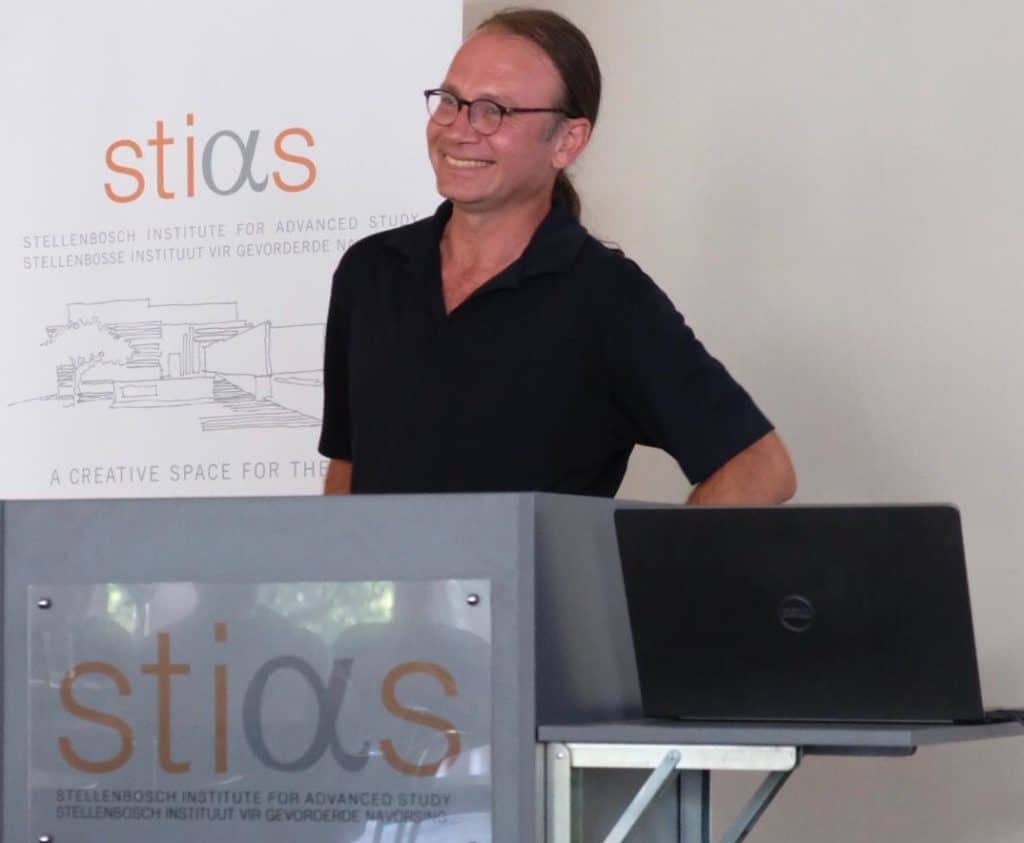STIAS fellow JP Smit of the Department of Philosophy at Stellenbosch University explained that his overall project is about the ontological status of institutions, i.e. countries, borders, universities, companies, money, etc. In May 2020 he presented a webinar which gave an overview of his understanding of the concept of institutional objects. In his second presentation he focused more narrowly on a subject close to many of our hearts – the concept of money.

“I’m aiming to address two questions,” he said. “Firstly, what does being money consist of? And secondly, what kinds of things can be money?”
He pointed out that conceptual clarifications like this become particularly relevant if we look at the rise in cryptocurrencies like Bitcoin.
“I argue that something is money if, and only if, it is typically acquired in order to realise the reduction in transaction costs that accrues by virtue of agents coordinating on acquiring the same thing when deciding what thing to acquire in order to exchange,” he said.
“I also argue against the common view that a variety of things (notes, coins, gold, cigarettes, etc.) can be money. All monetary systems are best interpreted as implementing the same basic protocol. Money, i.e. the thing that we coordinate on acquiring in order to lower our transaction costs, is, in all cases, a set of positions on an abstract mathematical object, namely a relative-ratio scale. The things that we ordinarily call ‘money’ are merely records of positions on such a scale.”
“Another way to say that is that the only thing that really matters is the percentage everyone has, not the absolute numerical value. It’s all about fractions of a total; we keep records of such totals in radically different ways.”
All choosing to do the same thing
“Something is money if it is a medium of exchange, a store of value, or a unit of account, but only the first condition is definitional. Being a unit of account is a consequence of being a medium of exchange, and so is the matter of being a store of value,” he continued. “Money is required for reducing transaction costs that accrue by virtue of social coordination. It doesn’t matter what we do, as long as we all do the same thing.”
He described it as a coordination game – in which what is money or currency is a choice and, as for other social objects, we are incentivised to use them as such because of the associated good and bad consequences. “One way, though only one way, in which this can happen is that governments declare something money – and we have to have it in order to be able to pay tax and be part of the system. The network effect is the main incentive – others have it, so you must too.”
Once we have settled on something, a standard emerges. The key is the reduction in transaction costs. “This means that theoretically you can issue your own currency but other people must be willing to accept it. Money is built on faith and trust – but this is not blind trust or irrational faith. Just like driving on the left or obeying a traffic light depends on trust, but not irrational trust. If you opt out of money, the money in your pocket becomes useless, so there is no reason to unilaterally do so.”
He pointed out that probably less than 10% of money is actually printed, but that, even if printed, “physical dollars and electronic dollars are records of a position on a relative-ratio scale. Both keep track of the same fact”.
Relative-scale numbers are numbers that mean something in relation to each other. Owning money therefore gives a particular position on a relative-ratio scale. “And people exchange positions based on that scale.”
“It’s all just records,” he added. “Everyone has some fraction of the total and gain must always be matched by loss on the relative scale. If the government prints money, the absolute number of money you have doesn’t change but the relative number does. The fraction of the total is what matters. So, if someone loses, someone else has more. This is so in a way that is conceptually prior to matters concerning dynamic effects or a rise in price levels, etc.”
“By my definition Bitcoin is not money – it’s not a medium of exchange but rather a speculative asset,” he said.
Asked why there is a need for such clarifications, he explained: “It’s about conceptual clarity. Where human behaviour rests on a fallacy, conceptual clarity rules out a number of such fallacies. Once you see things clearly, you are less likely to get things wrong.”
Michelle Galloway: Part-time media officer at STIAS
Photograph: Noloysio Mtembu
